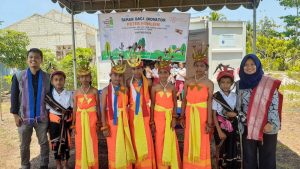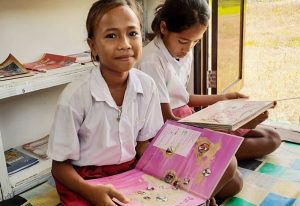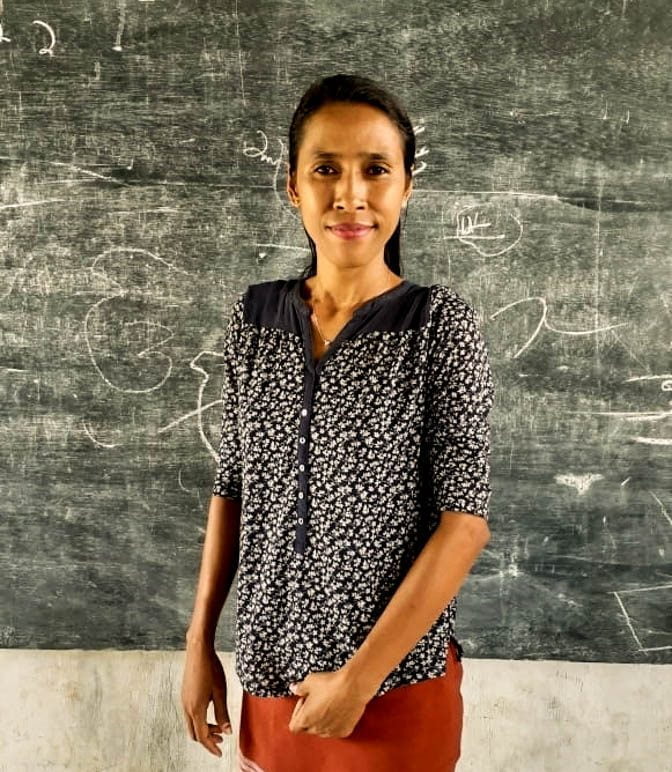Indonesia Literacy Rate 2021 for ages 15-19 years old was 99.81 percent. The literacy rate in urban areas is higher in all age groups compared to the literacy rate in rural areas including Sumba (source: statista.com).
Marta Leda has been teaching at SD Masehi Katura in Letekonda Village, Southwest Sumba, East Nusa Tenggara (NTT) for 11 years. The elementary school, which was founded in 1982, now has 158 students enrolled. Unfortunately, the literacy skills of students in this school, as well as in Southwest Sumba and across NTT in general, are still quite low compared to the national standard. This is indeed homework for Marta and her colleagues to increase Indonesia literacy rate 2021 in SD Masehi Katura.
According to data from the Indonesian Ministry of Education, NTT ranks third for the highest illiteracy rate among 34 provinces in Indonesia. Data from the Central Statistics Agency of NTT in November 2019 showed that 7% of NTT’s population is illiterate. Southwest Sumba Regency ranks first among the 22 regencies in the region with an illiterate rate of 17% of the total 338,000 residents. Therefore, improving Indonesia literacy rate is essential in improving the quality of human resources in Sumba.
Improving students’ literacy is certainly not an easy thing to do. Proper library with an adequate collection of books and good management is much needed to encourage students to develop a reading culture and improve their literacy skills. Thankfully, in early 2019, BL Halbert International through Happy Hearts Indonesia provided three mini-libraries made of containers. Those libraries are scattered in three villages around Southwest Sumba and West Sumba, namely Lagalete, Letekonda, and Hobawawi Village. Each library is located in a school area so that it is easily accessible to students, including kindergarten, elementary and middle school ones. SD Masehi Katura, the school where Mama Marta teaches, is one of the schools that is lucky to get this facility.
 Late last year, in collaboration with Taman Baca Inovator, a non-profit organization working on improving literacy among children in underprivileged areas of Indonesia, the three libraries have received support in the form of a library development program. Through this program, each library gets more than 500 new books, training programs and incentives for librarians. They also gets supervision on some interesting literacy activities such as reading club, English classes, and handicraft classes. According to the participants, the librarian training program had significantly enriched their understanding of literacy. In addition, the availability of new books and additional literacy activities have been proven to attract more students to visit the libraries.
Late last year, in collaboration with Taman Baca Inovator, a non-profit organization working on improving literacy among children in underprivileged areas of Indonesia, the three libraries have received support in the form of a library development program. Through this program, each library gets more than 500 new books, training programs and incentives for librarians. They also gets supervision on some interesting literacy activities such as reading club, English classes, and handicraft classes. According to the participants, the librarian training program had significantly enriched their understanding of literacy. In addition, the availability of new books and additional literacy activities have been proven to attract more students to visit the libraries.

“Our students have become much more excited by the new books and literacy-related activities. Their attendance in the library has also increased. As a second-grade teacher, I find it helpful. The new books in the library are an effective tool to help the students practice. They get excited because the books in the library are more varied and more interesting with the illustration. It helps them comprehend the information they read,” explained Marta, a proud librarian of Taman Baca Peter Henlein.
 Albina Tema Luru, a 6th-grade student of SD Masehi Katura who often spends her time at the library added, “I don’t have a storybook at home. So, I like to visit this library because I can read various stories here.”
Albina Tema Luru, a 6th-grade student of SD Masehi Katura who often spends her time at the library added, “I don’t have a storybook at home. So, I like to visit this library because I can read various stories here.”
Marta was convinced that one day, the reading skill of her students would equal national standards. She realizes that creating changes takes time and is definitely not easy. However, with a lot of support from various parties such as Taman Baca Inovator, BL Halbert International and Happy Hearts Indonesia, she is sure to witness a positive change in the lives of her students, one day at a time.
